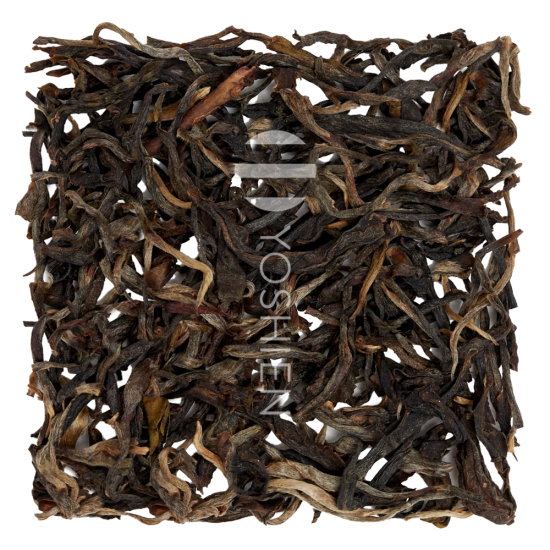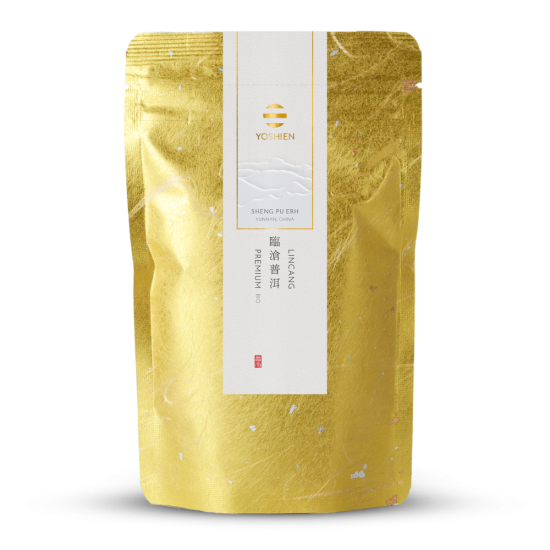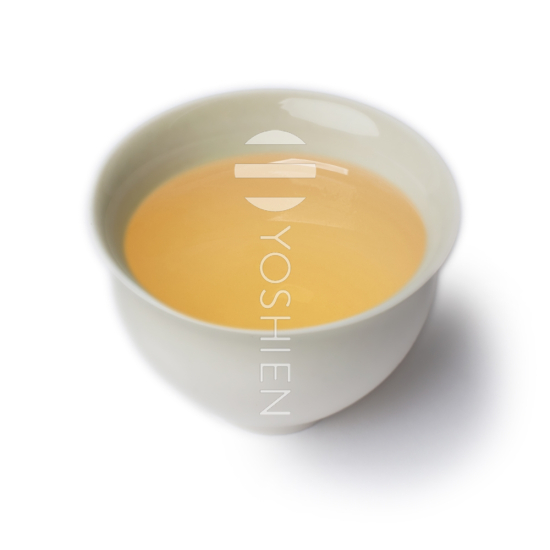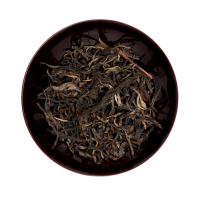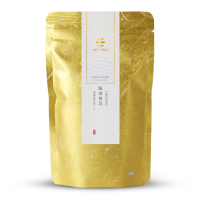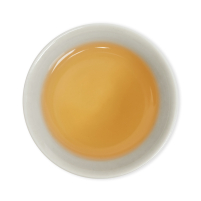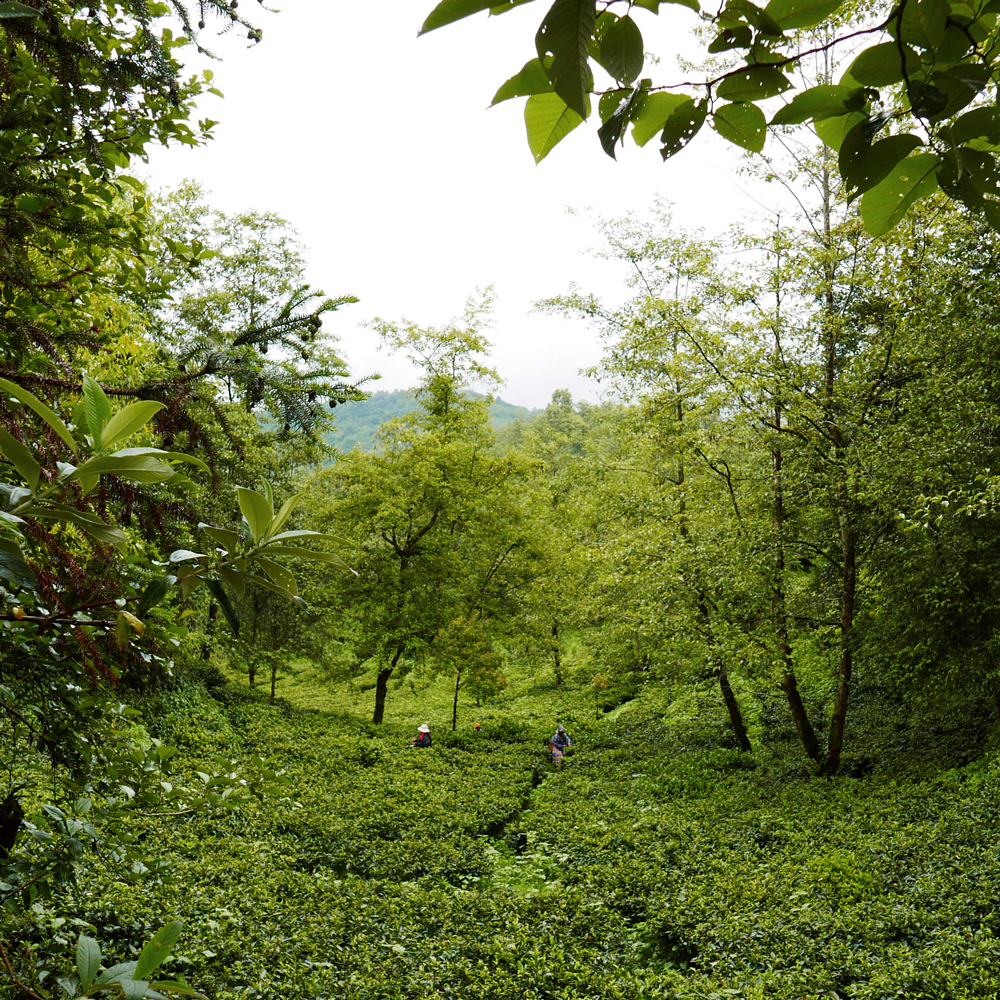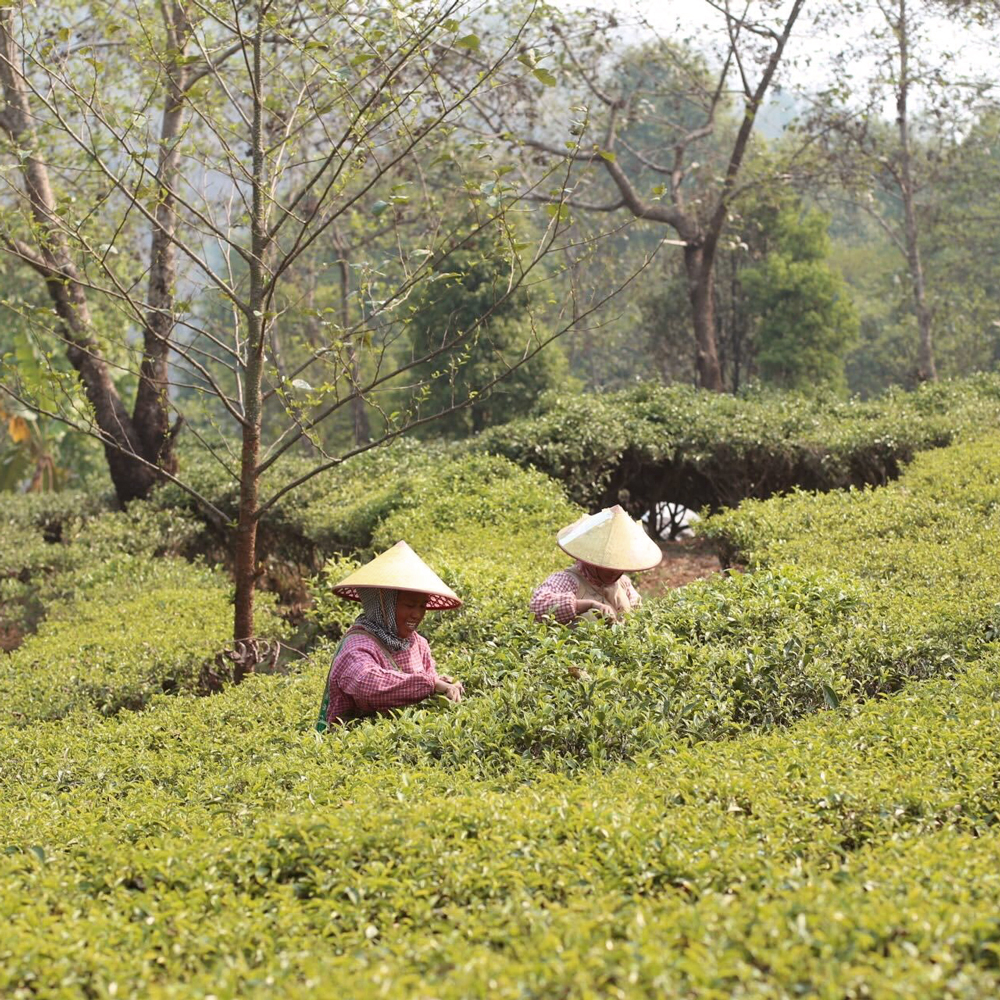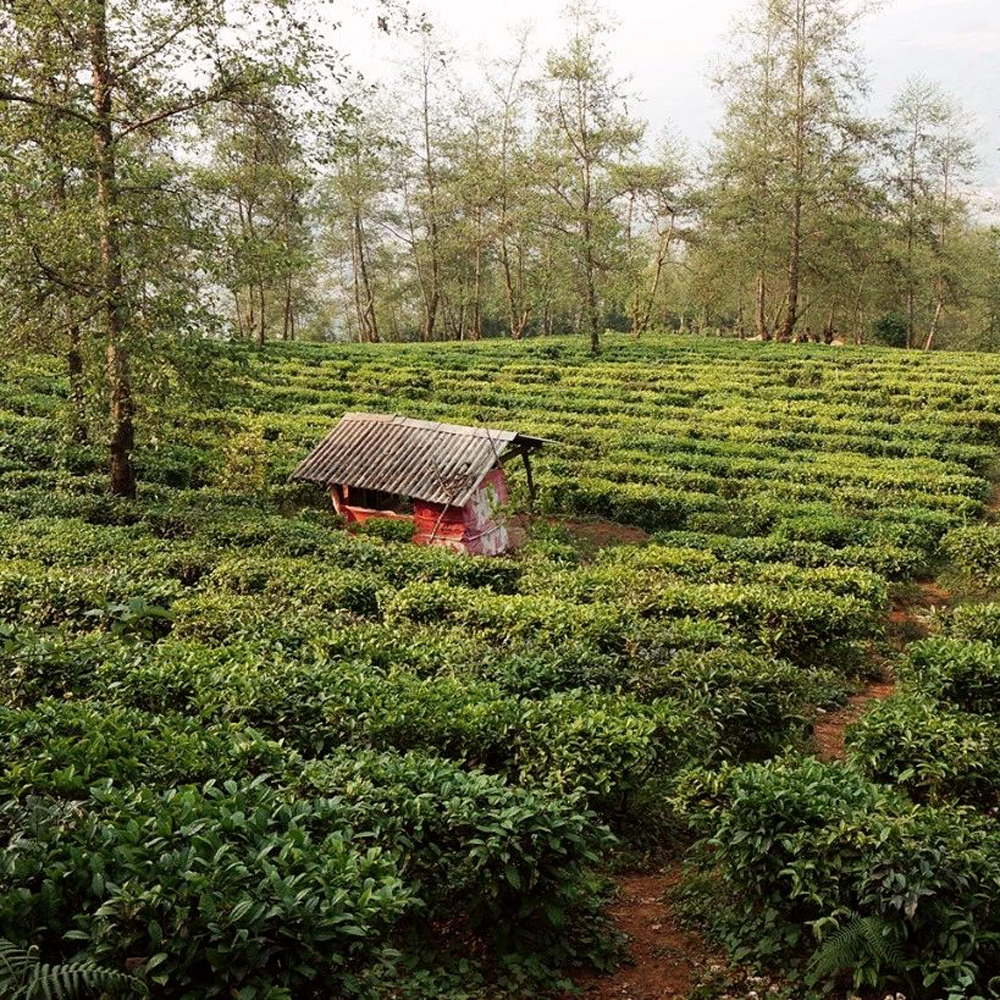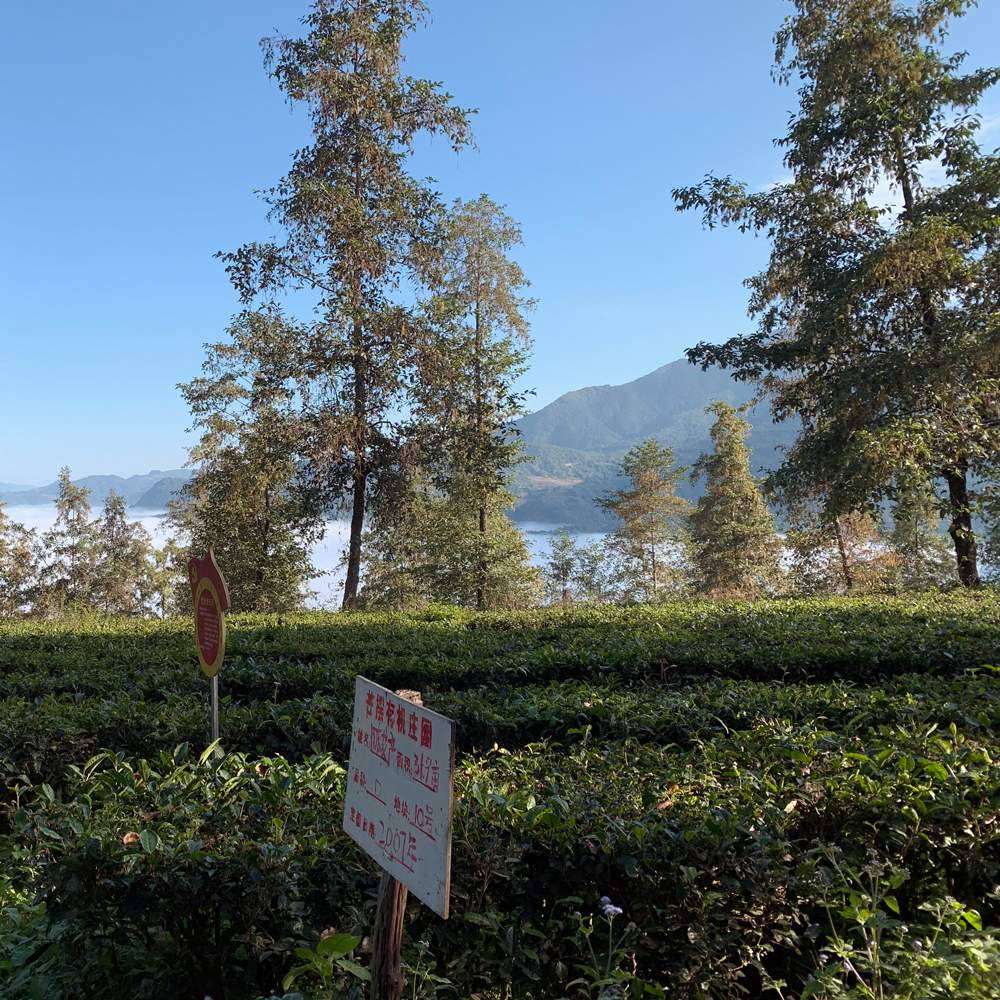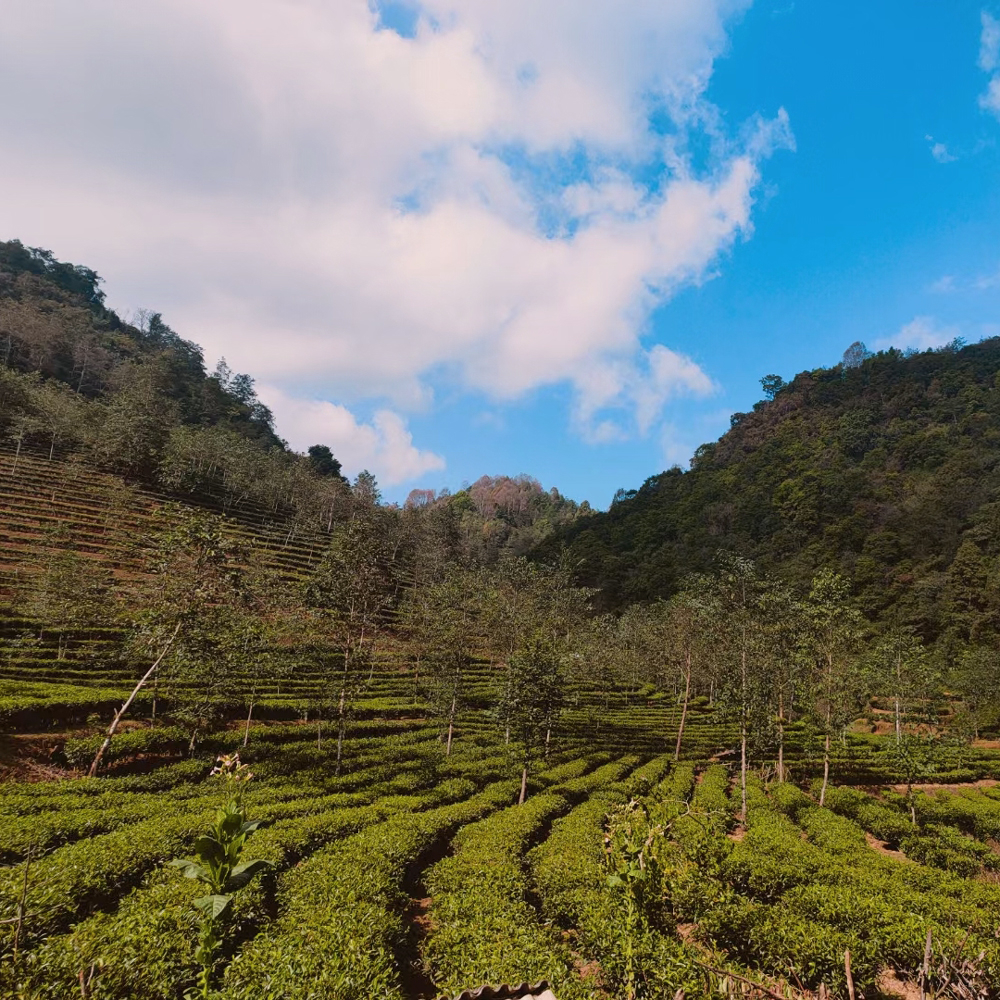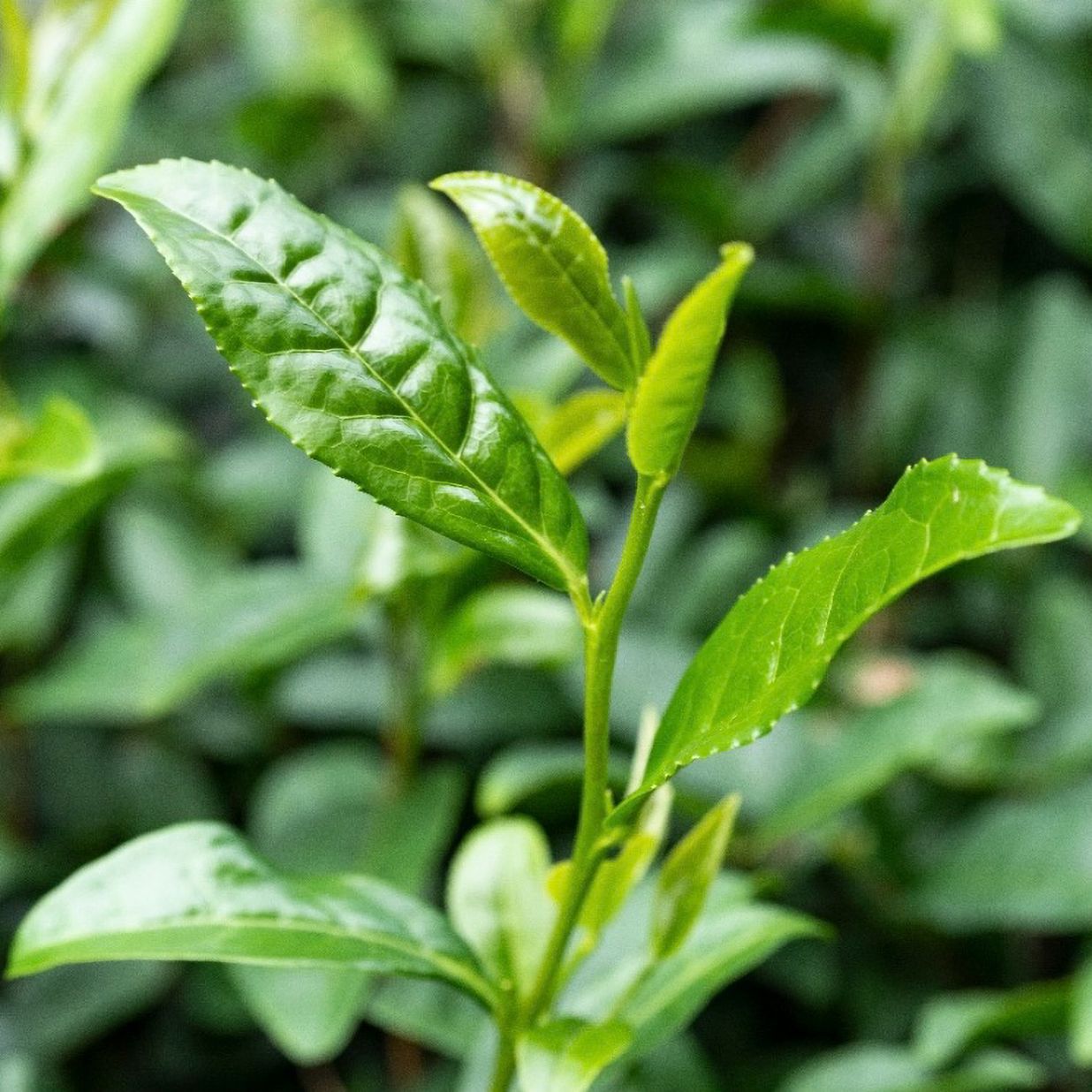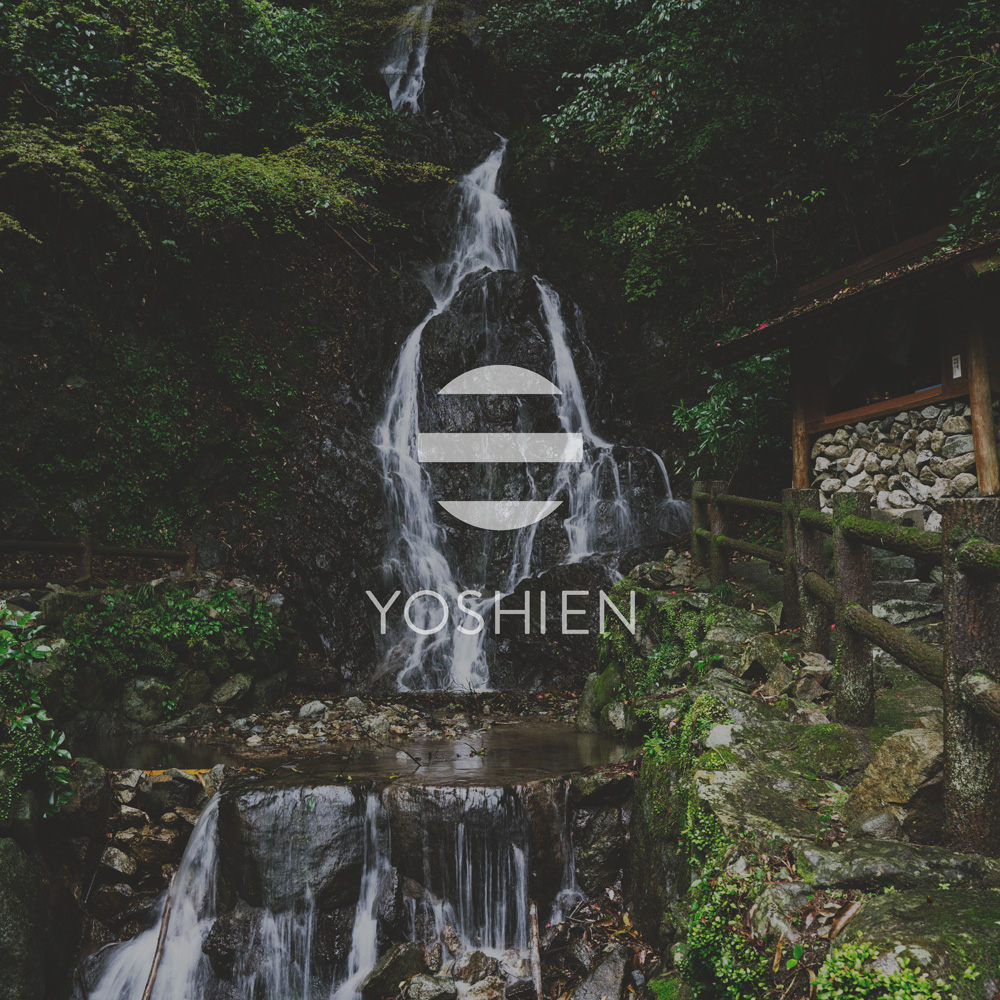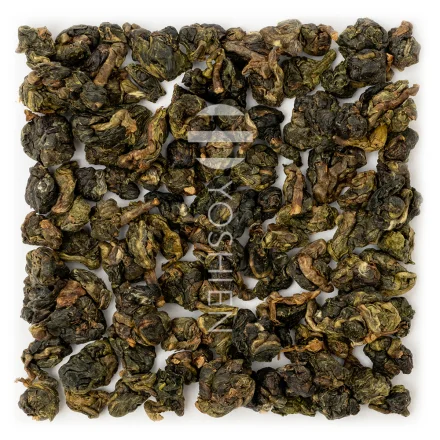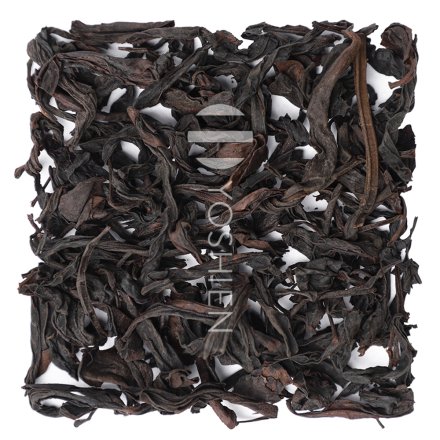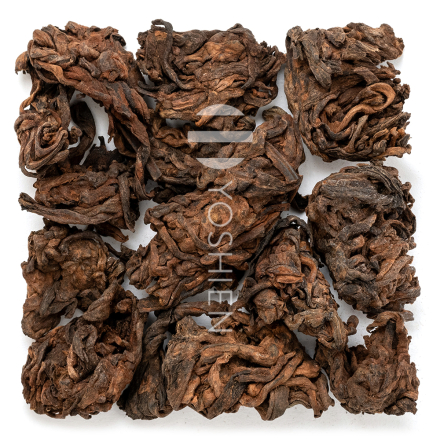Special features in location, cultivation and processing
The production of Pu Erh follows a standard process. The harvest season generally begins in late March or early April. Harvesting is always done by hand, and for particularly large tea trees, ladders are used to reach the more distant branches. For high-quality teas like this one, only the bud and the following two leaves are picked. Harvesting always takes place early in the morning until midday.
The trees are located somewhat away from the village centre, so the leaves are collected in large bamboo baskets and then transported back to the tea farmer. The farmer then spreads the tea leaves out for withering. Depending on the weather conditions, this is done either outdoors or indoors. The leaves are laid out on withering trays and dried with the help of fans or placed outside on cloths under the sun. The withering process lasts for several hours, during which moisture gradually escapes from the leaves, allowing them to be heated and shaped in the next step.
This step, known as “kill green”, involves stopping the oxidation of the leaves and is carried out in large woks that are still traditionally heated with wood fires. Batches of approximately 1kg are roasted over a period of 30-45 minutes, with regular turning. This step is similar to the production of conventional green tea, with the difference that the applied heat is slightly lower. Not all of the enzymes responsible for oxidation are eliminated during heating, allowing the tea, once pressed into a cake, to continue aging. This enzymatic activity and the ongoing transformation of flavour are some of the defining characteristics of Sheng Pu Erh.
After roasting, the leaves are rolled which is done mechanically using a specially designed rolling machine. This machine replicates the traditional hand-rolling technique, where leaves are tightly rolled into balls and pressed over bamboo mesh mats. This process roughens the cell walls of the leaves, drawing out the tea juices.
The leaves are very moist after rolling and must be dried again. This is done either outdoors or, in the case of rainy weather, indoors.
Centuries-old Pu Erh tea trees
The tea plants needed for producing Pu Erh are autochthonous, large-leafed, and wild-grown tea plants. In contrast to generic tea plants grown around the world, this type does not grow as a bush, but rather as a tree that can live for up to thousands of years. Scientific studies of the Camellia taliensis suggests that this tree is the common ancestor of all other types of tea. This cultivar is native to the region where China, Vietnam, Laos, and Myanmar meet. This is also where the Chinese province of Yunnan is located, and the history of Yunnan is also intertwined with the first known attempts to cultivate tea. For this reason, Yunnan is often considered the "cradle of all teas". In the tea forest of Yunnan, each tree has an individual character with a different shape and different cultures of moss and fungi. As such, each tree produces its "own" tea. The older the tree, the deeper its roots extend into the earth and into deep layers of rock and stone. These older trees can absorb minerals and trace elements that are passed on to the leaves and buds. The tea made from the buds and leaves of wild-grown older trees (Gushu) is thus rich in minerals and highly desirable.




